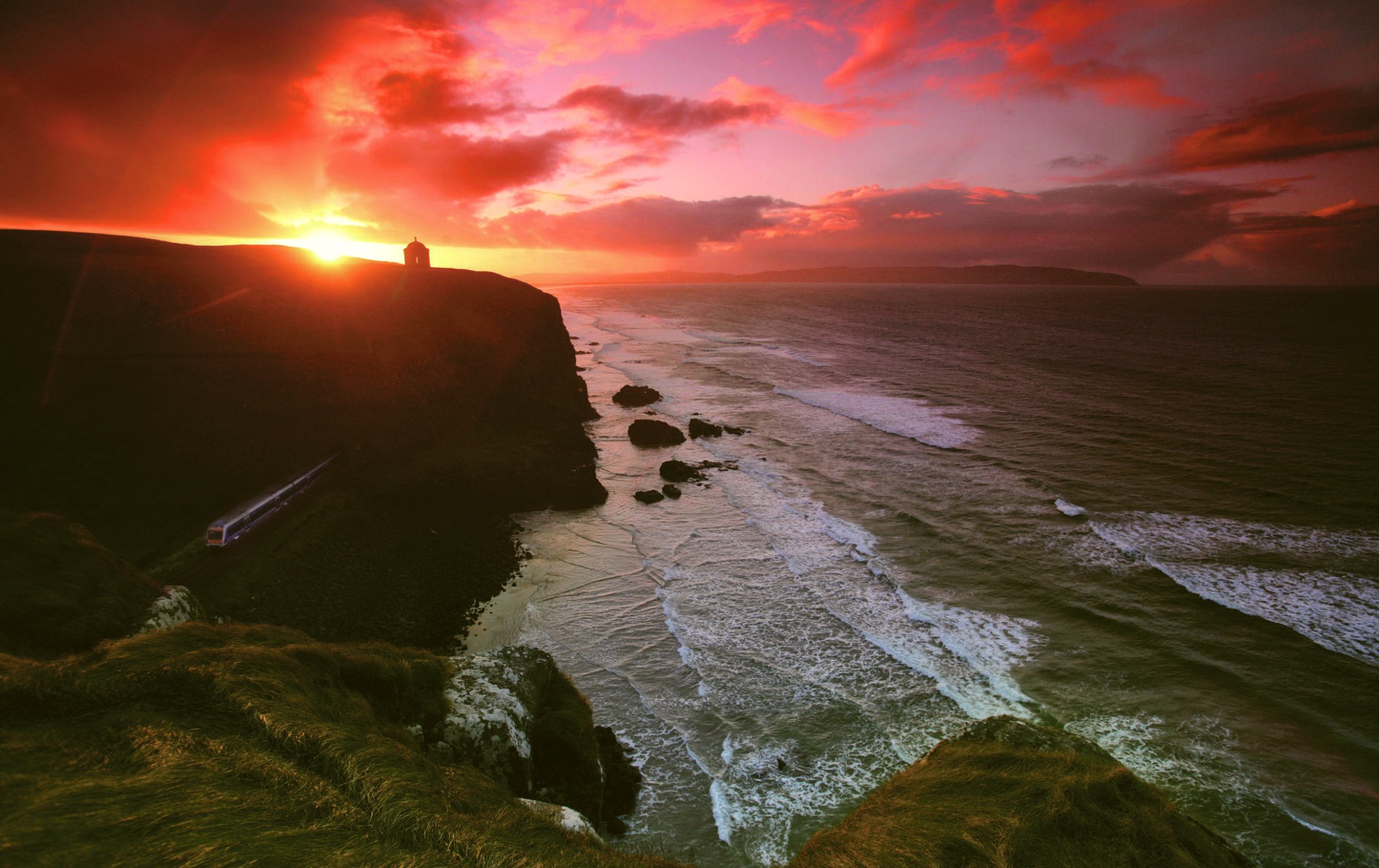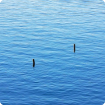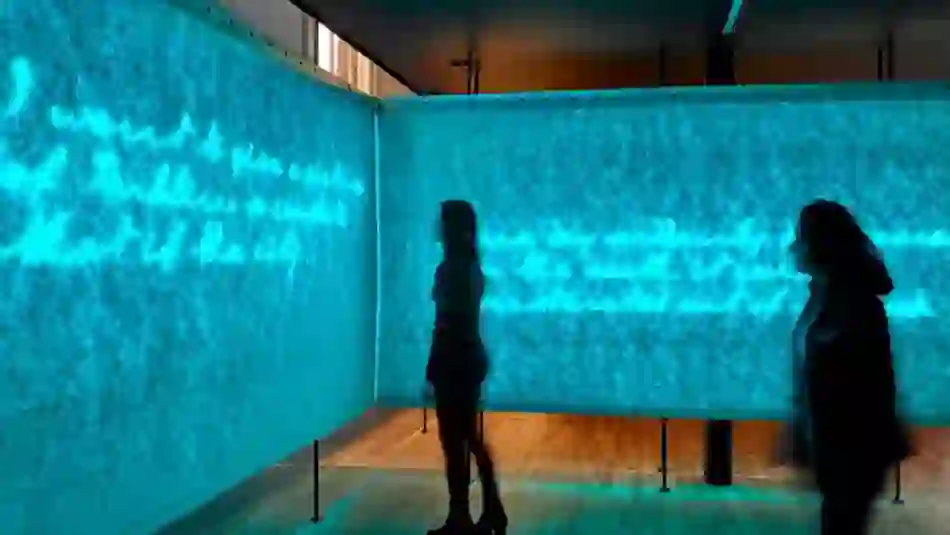

De stad Dublin: 9 literaire bezienswaardigheden
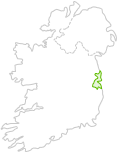

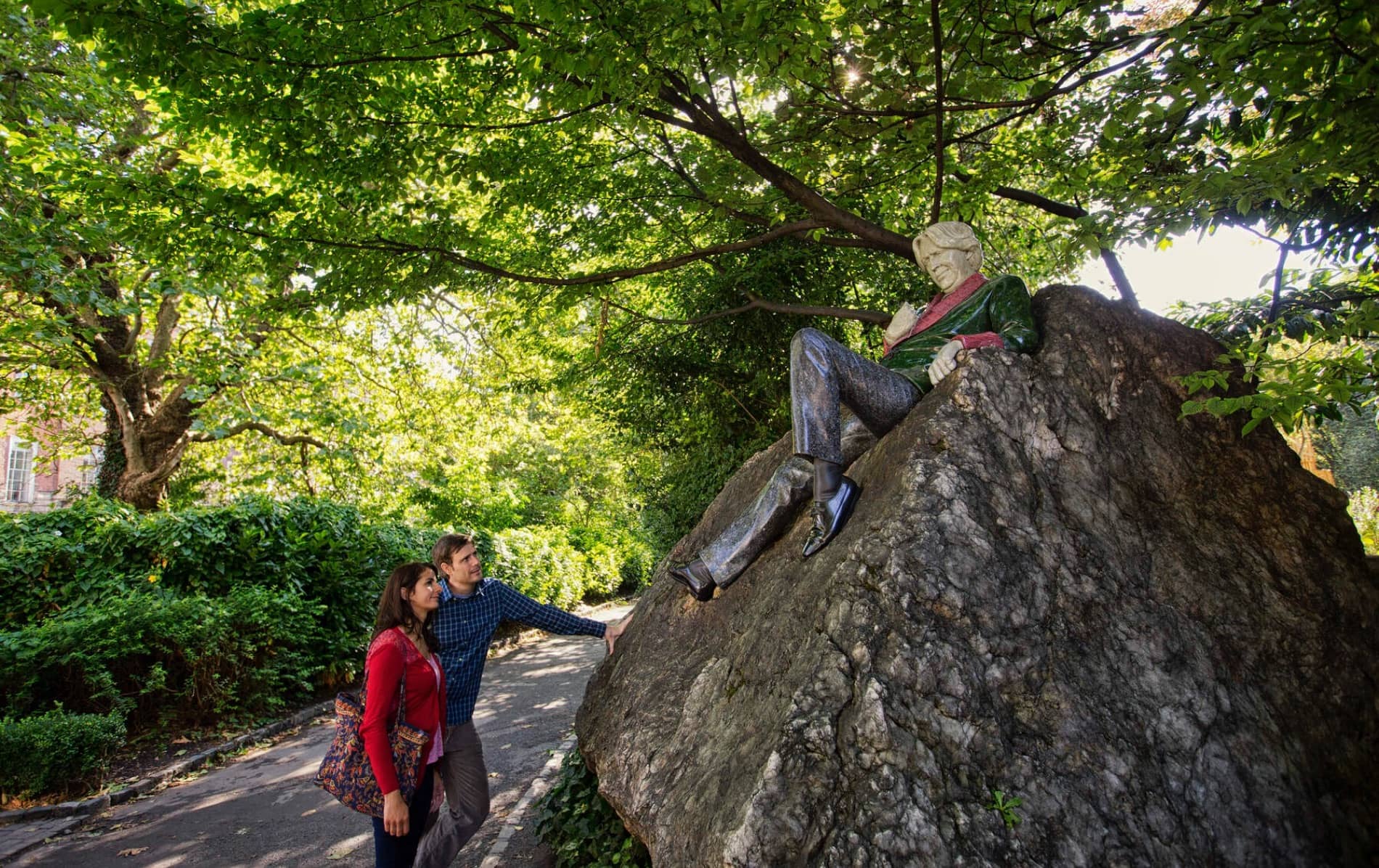
Het standbeeld van Oscar Wilde
1. Literaire grootheden
Er zijn maar weinig steden in de wereld zo verbonden met het geschreven woord als deze historische hoofdstad. Wandel langs kanalen, slenter over de Georgian pleinen en steek de rivier over: overal kom je gedenkplaten, bruggen en plaatsen tegen die gewijd zijn aan beroemde schrijvers.
Vooralsnog is Bernard Shaw niet belangrijk genoeg om vijanden te hebben, maar al zijn vrienden hebben een hekel aan hem.
Oscar Wilde
Je kunt een paar van onze schrijvers zien rondhangen op de hoek van de straat of verborgen in een park. Dus houd je ogen open voor George Bernard Shaw bij de National Gallery, een louche achterover leunende Oscar Wilde op Merrion Square en Brendan Behan die over het Royal Canal waakt.
Wist je dat?

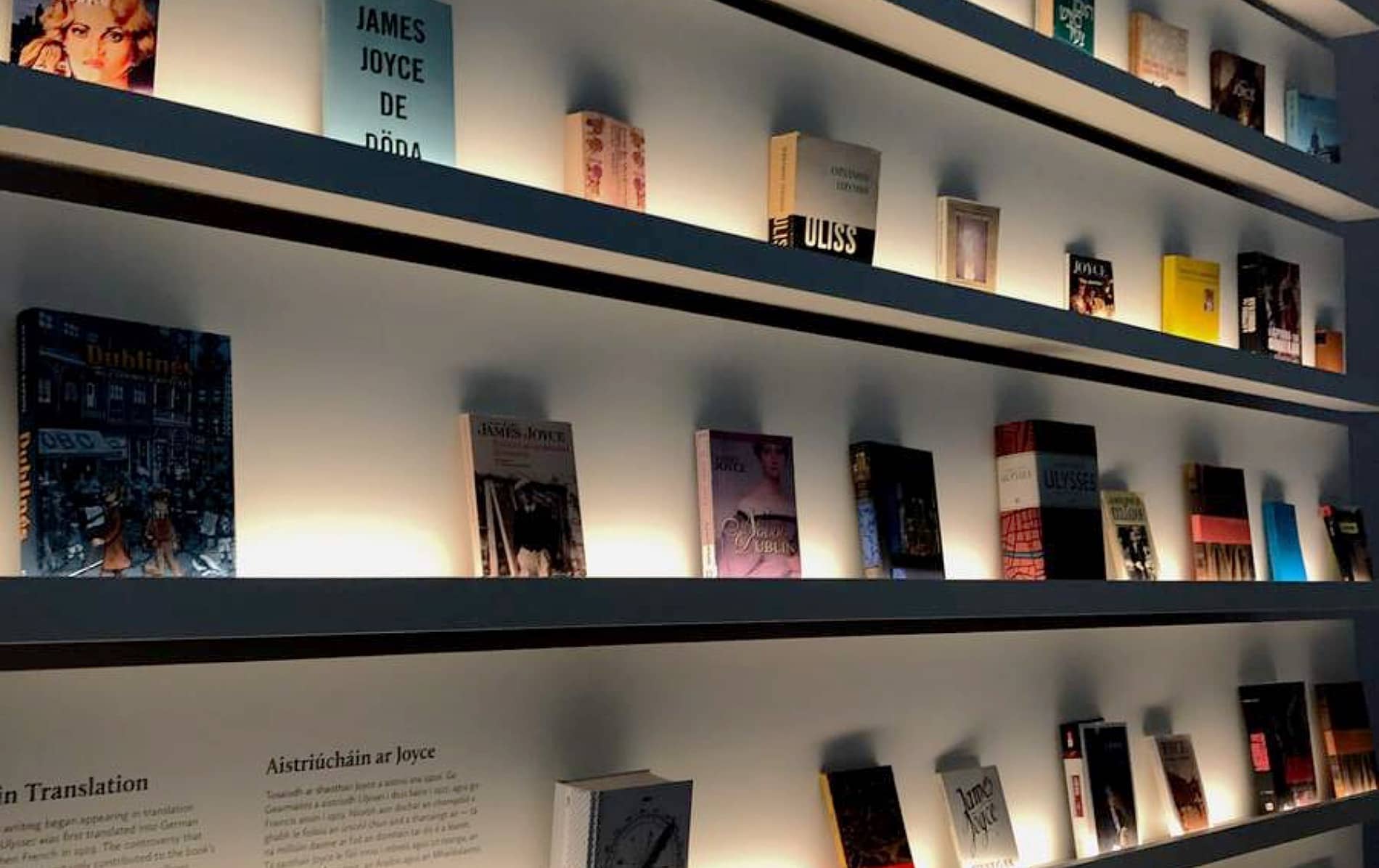
Museum of Literature Ireland (MoLI)
2. Literatuurmusea
De letterkundige getuigenissen van Dublin zijn goed gedocumenteerd in de uitstekende musea en galeries van de stad. In het Museum of Literature Ireland (MoLI) vind je meeslepende exposities over Ierlands invloedrijkste schrijvers en dichters en ook literaire artefacten, waaronder de allereerste uitgave van Ulysses van James Joyce.
Ooit geprobeerd. Ooit gefaald. Maakt niet uit. Probeer het opnieuw. Keer op keer. Faal beter.
Samuel Beckett
Het James Joyce Centre ligt in een van de mooiste Georgian straten van Dublin. Je vindt er wisselende Joyceaanse tentoonstellingen, rondleidingen en lezingen en ook een vaste expositie over het leven en werk van Joyce. Voor een goed beeld van de totstandkoming van de kranten, boeken en tijdschriften van Dublin ga je naar het National Print Museum, gevestigd in een voormalige garnizoenskerk.

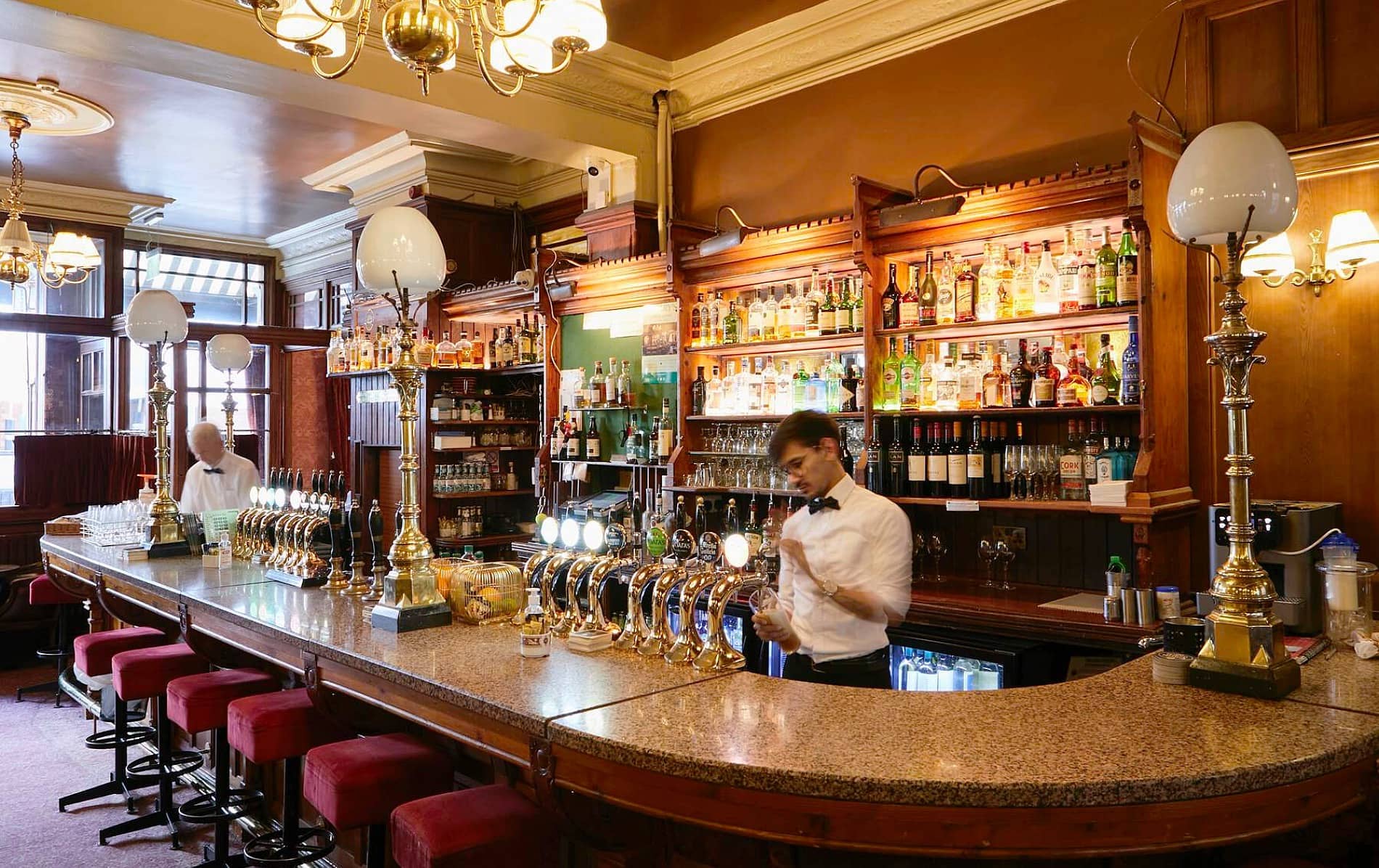
Neary's
3. Literaire pubs
In de pubs in Dublin zullen de gesprekken je opvallen. Vaak is er geen achtergrondmuziek, geen speelautomaat en leidt niets je af van de dringende taak om de wereldproblematiek te bespreken. Daarom hebben pubs zowel een historische als een actuele connectie met schrijvers. De pubs van Dublin spelen vaak een rol in beroemde literatuur, zoals in Ulysses van James Joyce, en werden regelmatig bezocht door wereldbekende schrijvers.
Slechte publiciteit bestaat niet, behalve je eigen overlijdensbericht.
Brendan Behan
James Joyce hield ervan rond te hangen in Davy Byrne’s. Neary’s was een favoriet van Brendan Behan en Flann O’Brien. En Toner’s was de enige pub in Dublin waar dichter W.B. Yeats soms naartoe ging. Kom alles te weten over de literaire connecties van Dublins pubs tijdens de Dublin Literary Pub Crawl, waarvoor je je verzamelt in The Duke in een zijstraat van Grafton Street. De gidsen zijn acteurs die je tijdens de literaire kroegentocht ruim twee uur lang vermaken met citaten, grappen en literaire geschiedenis.
Nog 3 aanraders: literaire pubs

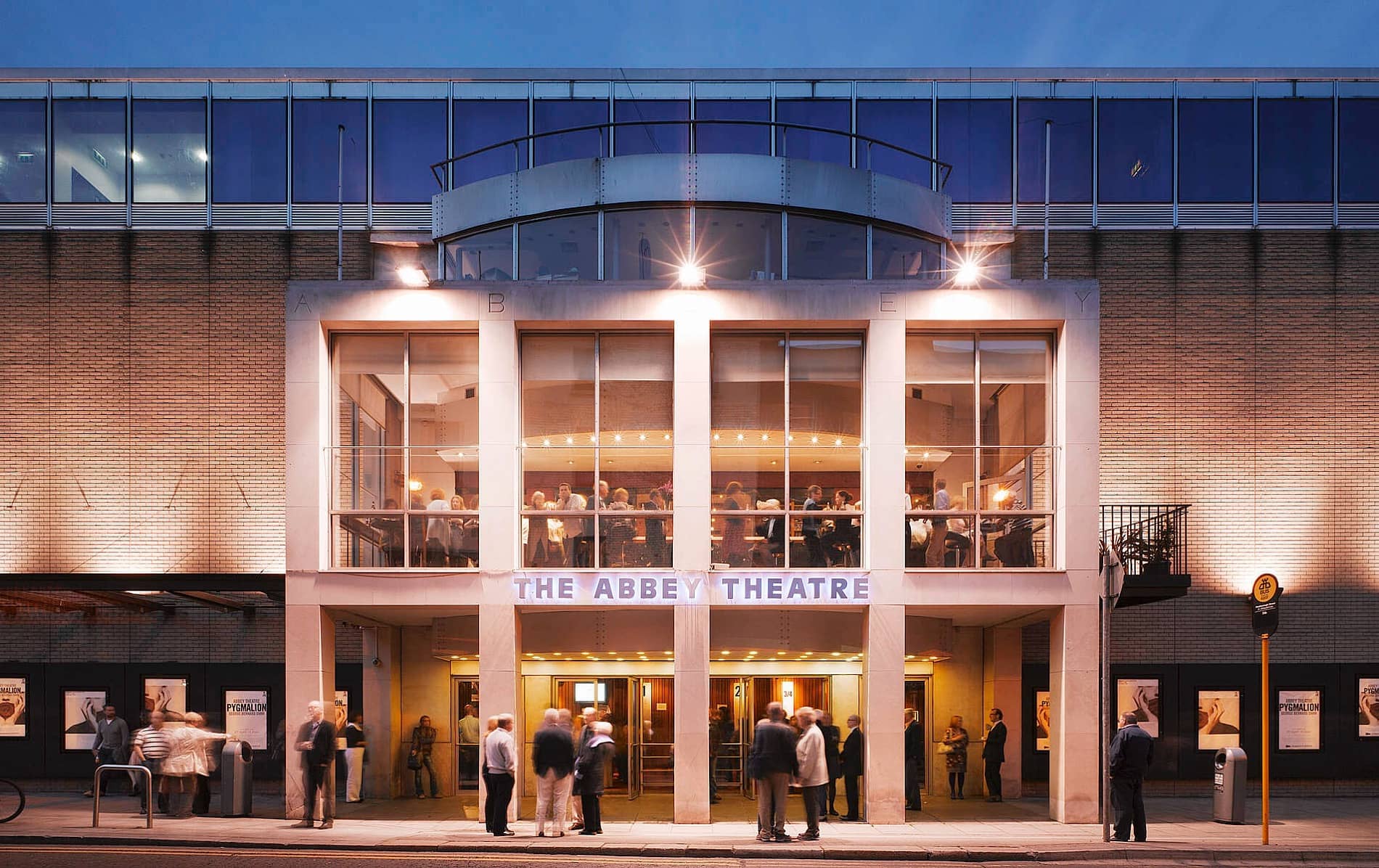
Het Abbey Theatre
4. Literair hoogtepunt: het Abbey Theatre
Een favoriet theater kiezen in Dublin is lastig – de theaters Gaiety, Gate en Olympia zijn van onschatbare waarde voor de stad en bestaan al heel lang – maar het Abbey is het thuis van het nationale theater en droeg bij aan de vorming van het moderne Ierland.
Het leven lijkt mij een voorbereiding op iets dat nooit gebeurt.
W.B. Yeats
Het theater dat in 1904 werd opgericht door dichter W.B. Yeats en toneelschrijfster lady Augusta Gregory, was de afgelopen eeuw het centrum van het culturele leven van Dublin en zet zich ook vandaag de dag in voor het ondersteunen en promoten van Ierse schrijvers en artiesten.
Vermaak, provocatie en ondersteuning hebben allemaal hun plek in het theater. Wist je trouwens dat naar het theater gaan in Dublin vaak goedkoper is dan in veel andere hoofdsteden? Een leuke avond uit kost je dus geen rib uit je lijf. Je kunt ook een rondleiding achter de coulissen krijgen, voor een exclusieve blik op dit bijzondere theater.

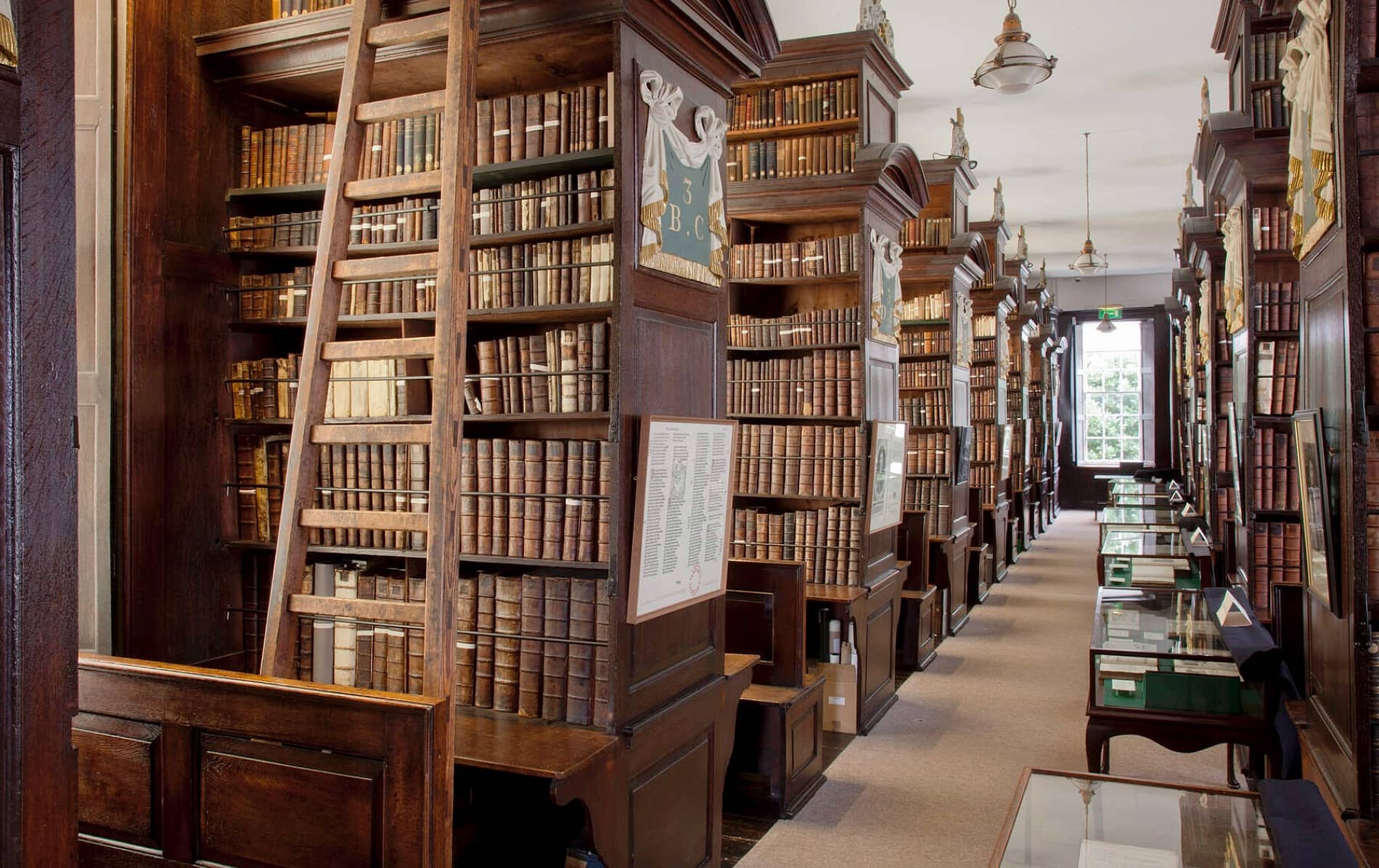
Marsh's Bibliotheek
5. Bibliotheken
De bibliotheken van Dublin zijn adembenemend mooi: een lofzang voor het geschreven woord. Kijk maar naar de Long Room in Trinity College, zonder twijfel een van de mooiste bibliotheken van Europa. Of wat dacht je van de Marsh’s Library, die sinds haar opening zo'n 300 jaar geleden grotendeels onveranderd is gebleven.
Als ik sterf, staat Dublin geschreven in mijn hart.
James Joyce
De Chester Beatty Library is een absolute must-see en is omschreven als 'de beste verzameling manuscripten en boeken van een 20e-eeuwse particuliere verzamelaar'. Het is eigenlijk meer een museum dan een bibliotheek en omvat ruim 6000 voorwerpen uit Oost-Azië en het Westen, waaronder de vroegste exemplaren van de vier evangeliën. Een literaire tocht door de stad is niet compleet zonder een bezoek aan deze bibliotheek.
Mag je niet missen ...

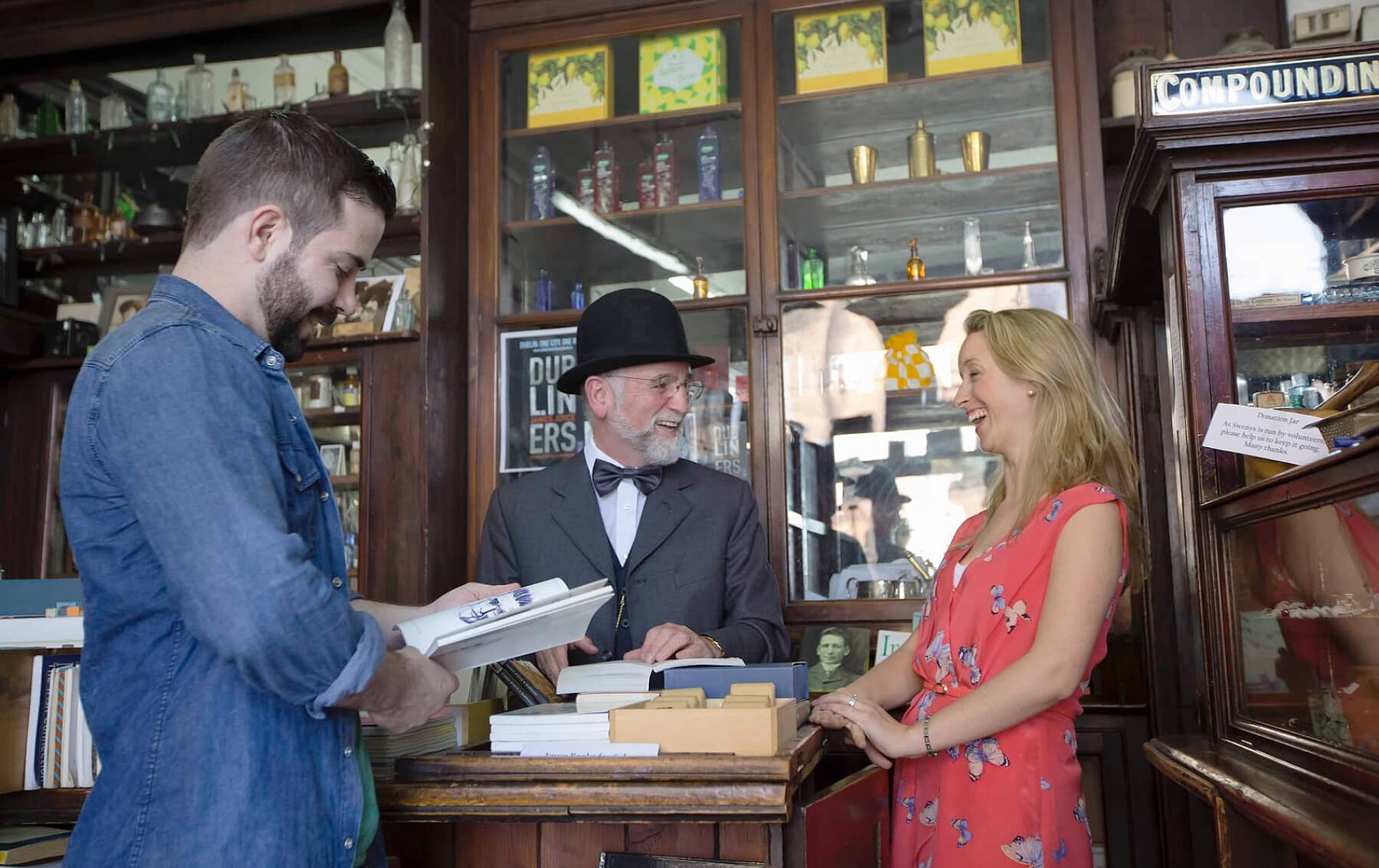
Sweny's apotheek
6. Boekwinkels
Dublin koestert zijn onafhankelijke boekhandels en verspreid over de stad vind je een aantal pareltjes. Ulysses Rare Books in Duke Street oefent een grote aantrekkingskracht uit op lezers en heeft een magnifieke collectie eerste drukken van werk van Joyce, Wilde, Yeats en Flann O’Brien The Winding Stair verkoopt zowel nieuwe als tweedehandsboeken in een mooie winkel aan de rivier de Liffey. Extra leuk is dat je er kunt dineren terwijl je je verdiept in de klassiekers.
Een wijze oude uil woonde in een bos. Hoe meer hij hoorde, hoe minder hij sprak, hoe minder hij sprak, hoe meer hij hoorde. Laten we die oude wijze uil nabootsen.
Flann O'Brien
Stokes Books in de George’s Street Arcade heeft zeldzame tweedehandsboeken in zijn assortiment. Ook in de Joyceaanse Sweny’s Pharmacy, genoemd in Ulysses, kun je voortreffelijk tweedehandsboeken kopen.

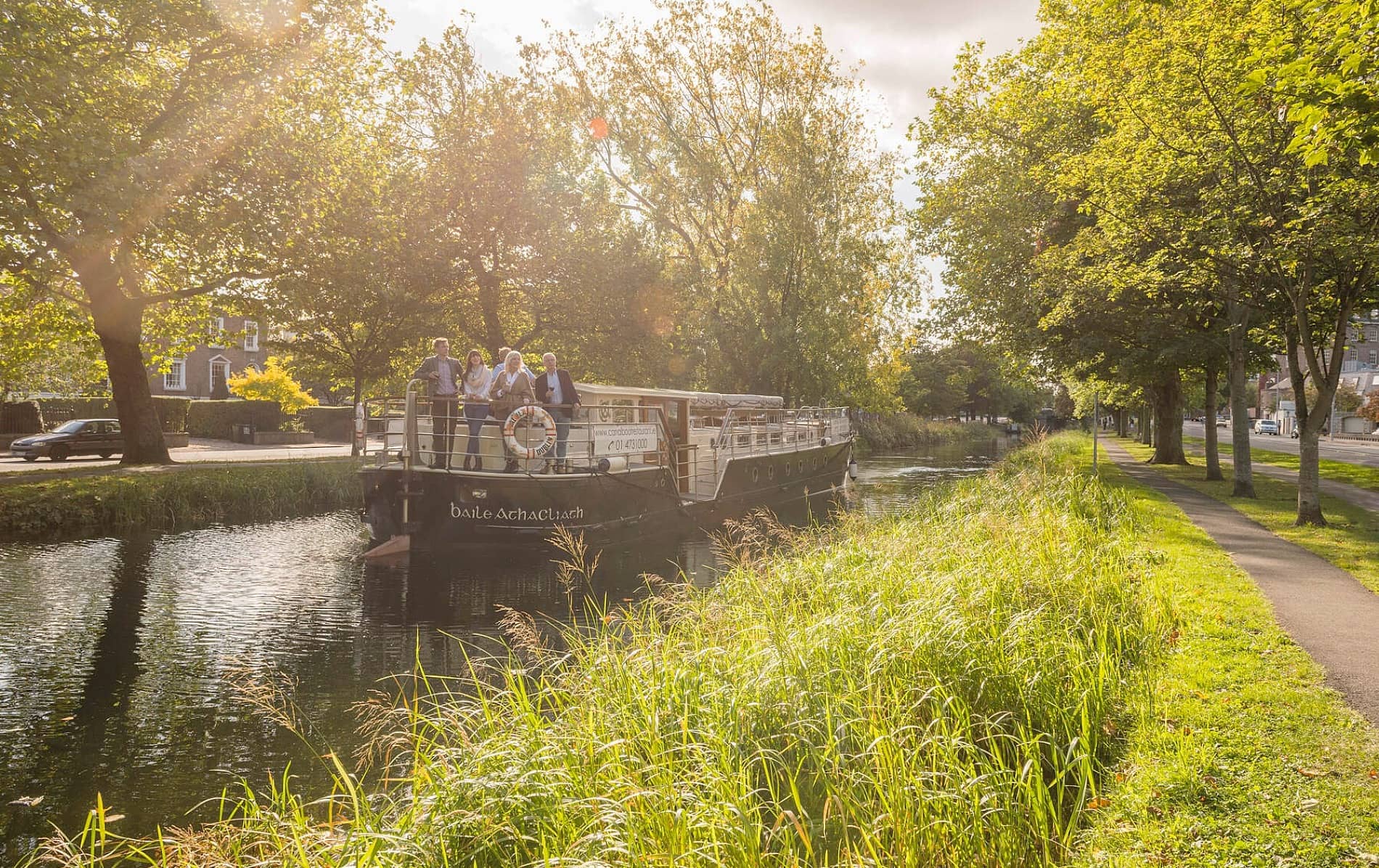
Canal Grande
7. Het Grand Canal
De dichter Patrick Kavanagh werd in county Monaghan geboren, maar hij woonde lange tijd in Dublin. Nergens in de stad zul je zijn aanwezigheid duidelijker voelen dan bij het Grand Canal, vereeuwigd in zijn gedicht Canal Bank Walk: 'leafy-with-love banks and the green water of the canal pouring redemption for me'.
Wat in de kranten staat is vaak nieuw, maar zelden waar.
Patrick Kavanagh
Deze stille waterkant was zo geliefd bij de dichter dat zijn standbeeld nu op een bankje zit op zijn favoriete plek bij de brug van Baggot Street. Neem een boek mee, neem de tijd en geniet van deze prachtige strook rust midden in het centrum van de stad.
Grand Canal: 3 dingen om te doen

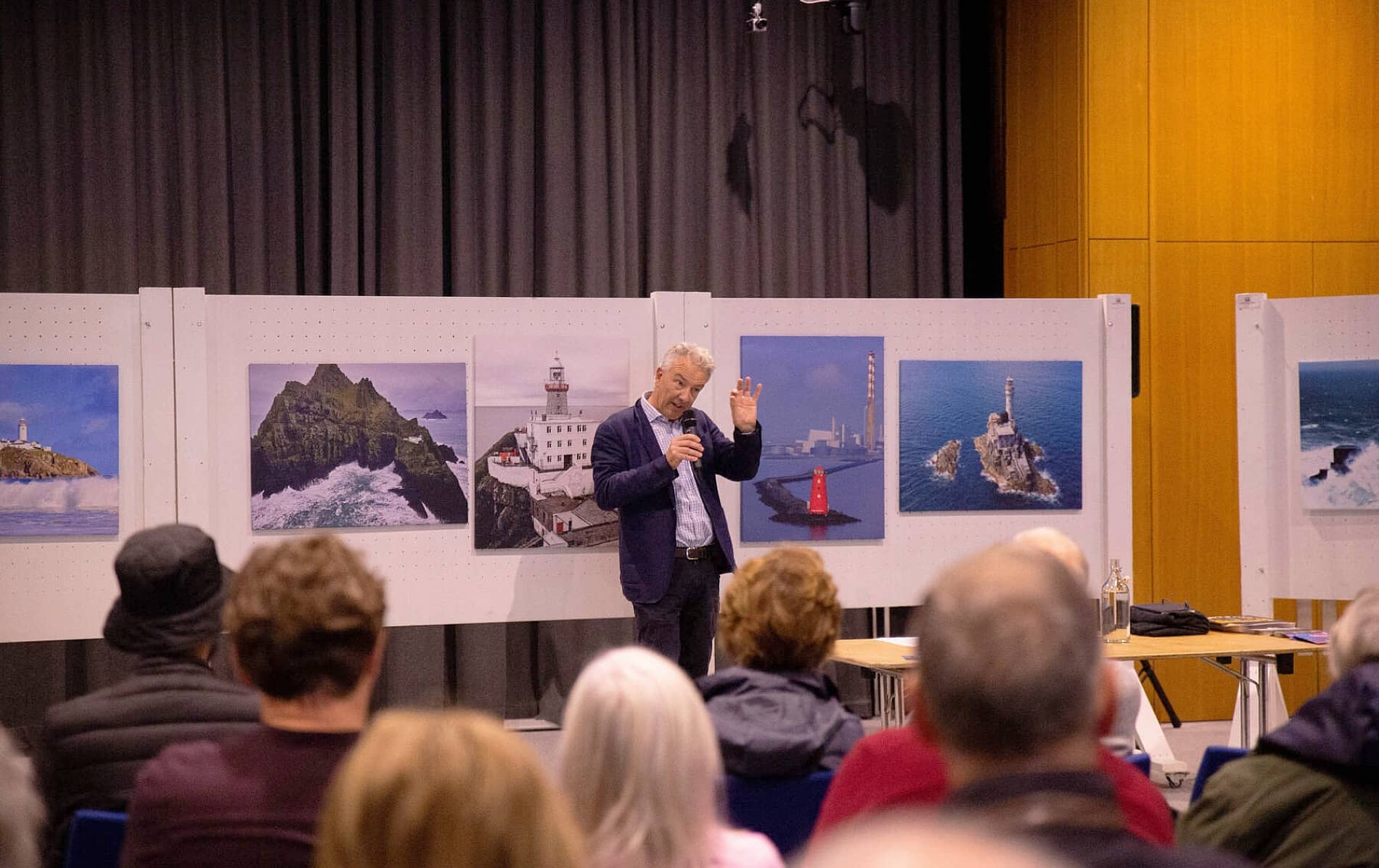
Boekenfestival Dublin
8. Literatuurfestivals
Dublins literaire cultuur is springlevend en de stad brengt nog steeds uitzonderlijke schrijvers voort, zoals Anne Enright, Joseph O'Connor, Colm Tóibín en Roddy Doyle. Vaak komen ze samen om hun lezers te ontmoeten op de literaire festivals van Dublin, met lezingen, evenementen en interviews – een kennismaking met hun creatieve geest.
Niets is erger dan de ambities van een persoon zonder talent.
Joseph O'Connor
Probeer het International Literature Festival (mei), het Dublin Writers Festival (september) en het Dublin Book Festival (november). Net buiten de stad blinkt het dorp Dalkey uit in literatuur met het jaarlijkse Dalkey Book Festival in juni.
3 boeken die zich afspelen in Dublin:

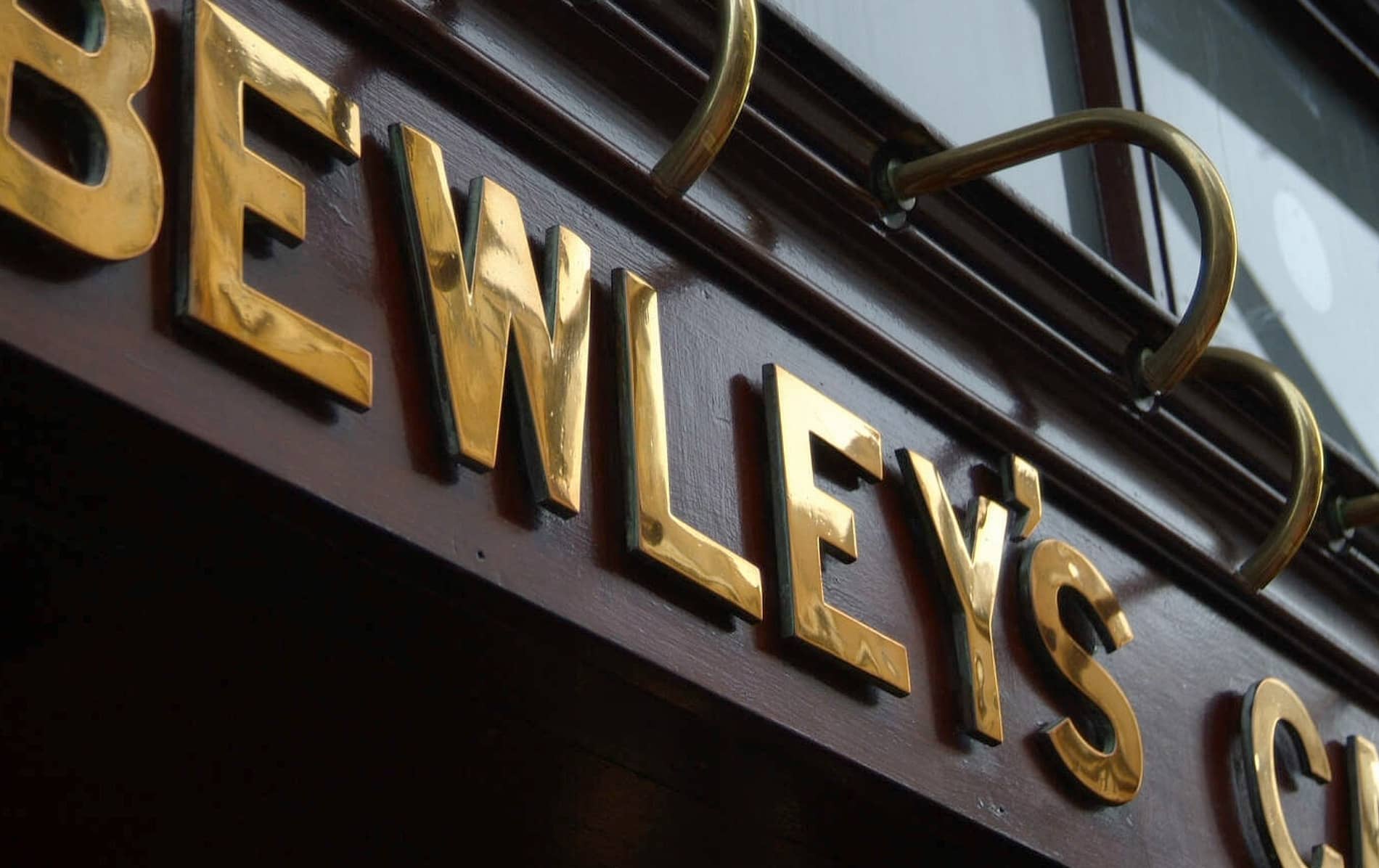
Bewley's Café
9. Bewley's
Is er iets leukers dan een heerlijk kopje koffie drinken in het favoriete café van enkele van de beste schrijvers van Dublin?Bewley’s in Grafton Street met zijn beroemde gevel met glas in lood is geïnspireerd op de grand cafés uit Parijs en Wenen. Het is al sinds de opening in 1927 een ontmoetingsplek voor Dublinners. Als je een plekje zoekt om wat ontspannen te lezen, dan zit je hier goed.
Nergens anders maken gedichten, toneelstukken, romans en verhalen zo’n duidelijk deel uit van de persoonlijkheid van de stad als in Dublin.
Fergal Keane, verslaggever
In de loop der jaren heeft Bewley’s vele bekende literaire figuren te gast gehad, waaronder James Joyce, Patrick Kavanagh, Samuel Beckett en Sean O’Casey. In de voormalige Oriental Room vind je het theatercafé, perfect voor soep en een broodje, gevolgd door een eenakter (als je je even kunt losrukken van je pageturner natuurlijk!).





